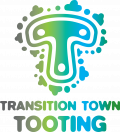Exploring facilitation choices for our ‘Rooting in Tooting’ project with asylum-seekers and refugees
Our new ‘Rooting in Tooting’ project has been developed with the Tooting charity CARAS (Community Action for Refugees and Asylum-Seekers). We’ve written two posts so far, please scroll down this blog to read them. You’ll see that our pilot project in May and June was enjoyable and positive.
| For Those in Peril on the Sea – Hew Locke |
Quiz question A: what percentage of the migrants who have come to Europe so far in 2015 have reached Calais? 1%, 4%, 8%, 15%? Answer is at the end of the post.
On Sept 1st, 11 of us gathered at CARAS for an orientation hosted by the charity team.
Against a background of dramatic media coverage, our intention was to understand just a bit more about the ‘whys, whats and hows’ for refugees and asylum-seekers, and the experiences of the young people and families with whom CARAS works.
We know a lot about the activities we are going to do offer: growing and gardening and improving biodiversity at the CARAS office, creative projects, telling the Rooting in Tooting story over the next year, and exploring low-carbon living.
We’re not familiar with the reality of life for refugees now.
- How should we offer activities so that they are meaningful to participants, and so that we share them in an appropriate way?
| Rug People – Paloma Varga Weisz |
A 2-hour discussion on this topic had to be very selective, and we take our TTT hats off to Eleanor and Molly as guides.
Thank you for your preparation and care, and thoughtful, challenging comments.
Quiz question B: What was the country of origin for the largest number of unaccompanied children entering the UK so far in 2015?
Afghanistan; Eritrea; Albania; Syria? Answer is at the end of the post.
Three of the topics that we discussed:
1. Refugees and asylum-seekers have been repeatedly processed and questioned…of course those are the steps for coming to an agreement about official leave to stay in the UK.
- To balance that experience in our activities: we’ll ask for and trust that individuals have skills and that they can teach each other; we’ll tackle things together rather than directing.We’ll let participants volunteer what they want to tell us.
| The Folkestone Mermaid – Cornelia Parker |
2. Unaccompanied teenagers are resilient and ambitious, not passive. They have crossed many countries (at CARAS 18 home countries are represented), and weathered many setbacks (the ones that make it). Asked in youth club discussions about their ideal futures, they want to give something back – for example become a teacher, or a pharmacist. “In many ways they are the alpha children of the world”, and they deserve respect.
- We’re encouraged not to shy away from new vocabulary that can be stretching and thought-provoking. We’ll explain specialist and unfamiliar language.
3. What is going well in the UK for refugees? The UK system sees teenage unaccompanied asylum seekers as ‘children first’ and provides a range of services to support them, so that as far as possible they can experience life like other teenagers locally – with everyday choices, opportunities, and challenges.
| Public Works – Folkestonomy |
These approaches are role models for other countries.
- We’ll try and reflect the atmosphere in the youth club, which “feels like a group of people having a nice time together”. We’ll encourage putting down roots.
All the photos are taken at Folkestone Sculpture Triennial shows 2008-2014, which included themes of dislocation and distant travel in the setting of a derelict Channel port railhead.
And the two quiz answers? Question A: 1%. Question B: Albania.
Please contact TTT if you would like to discuss or contribute to this project. – Charles

